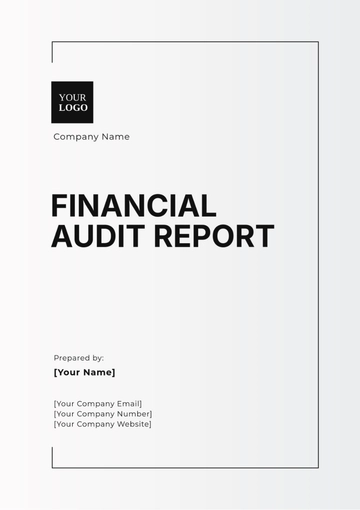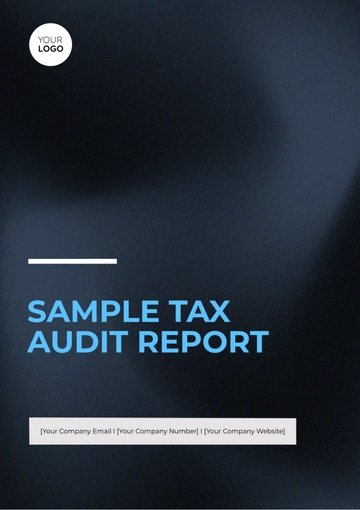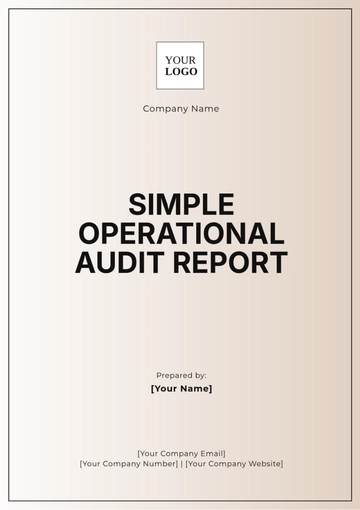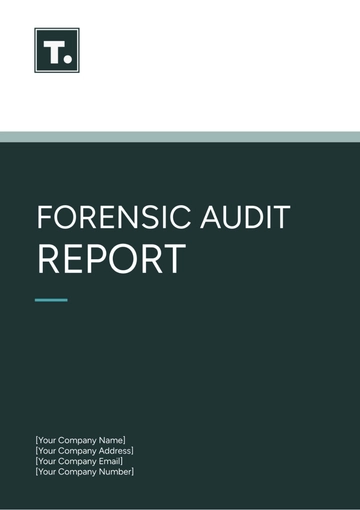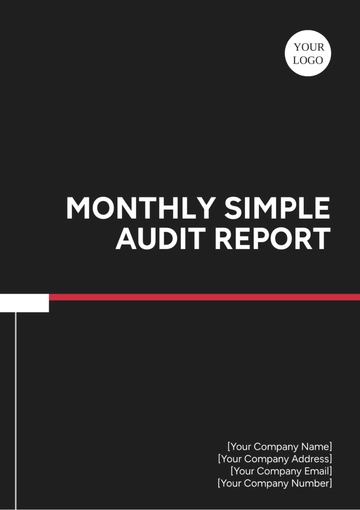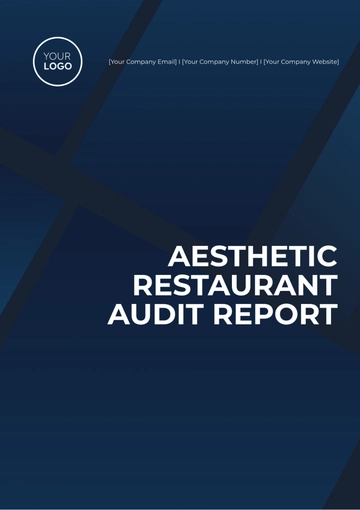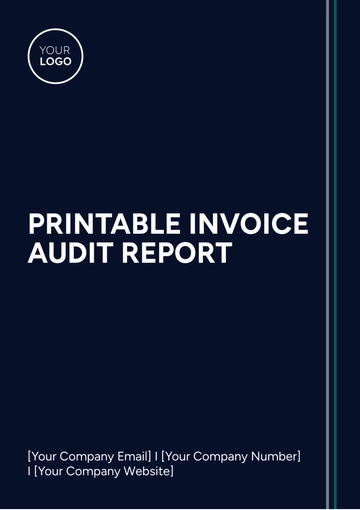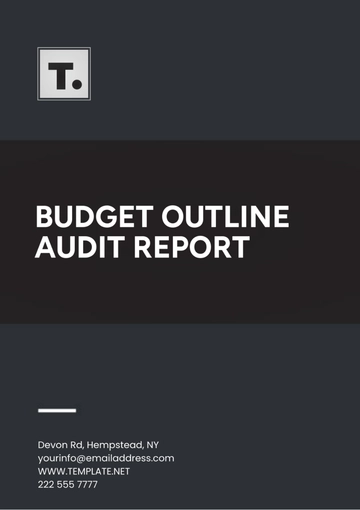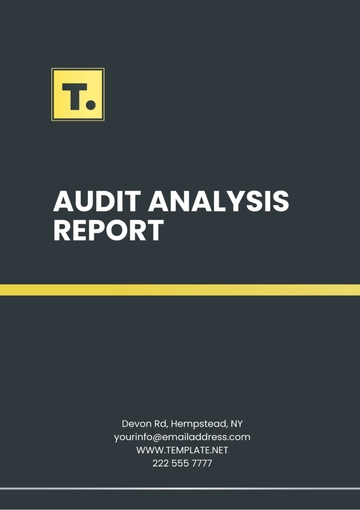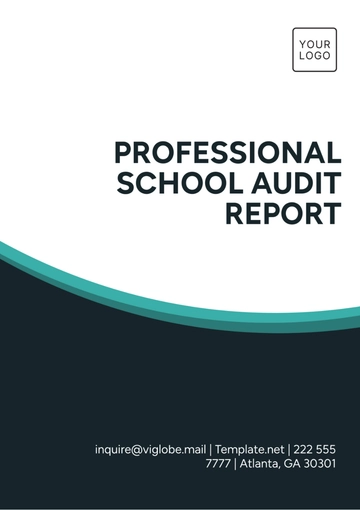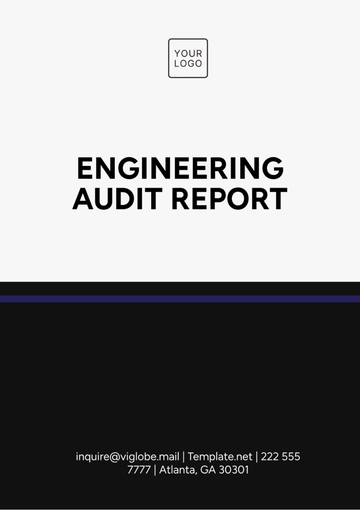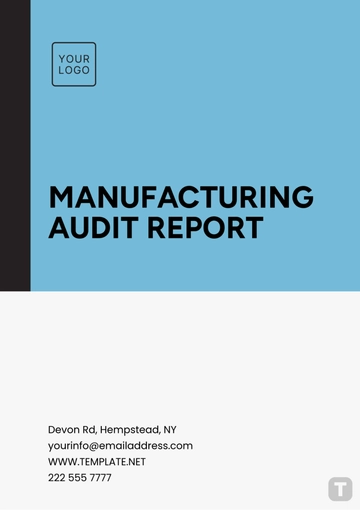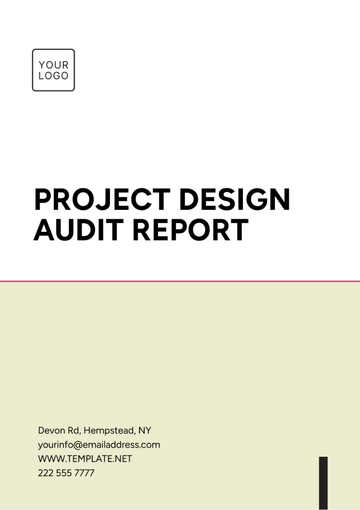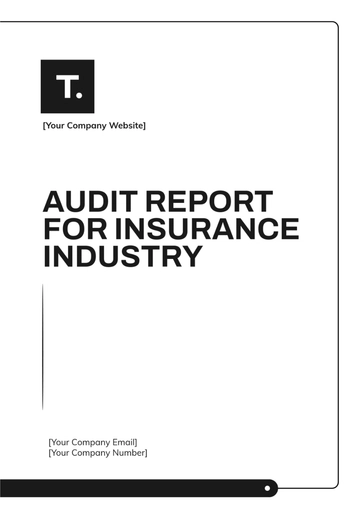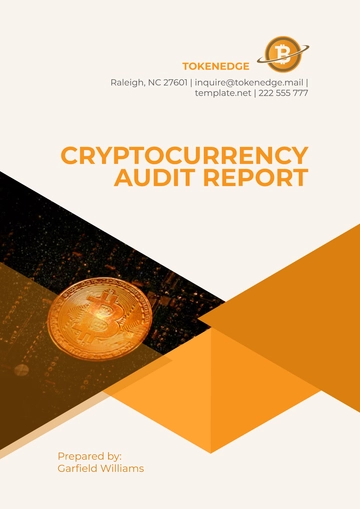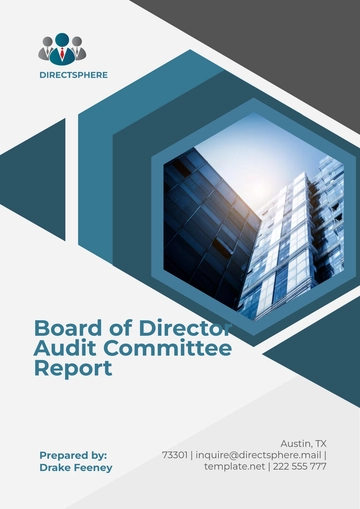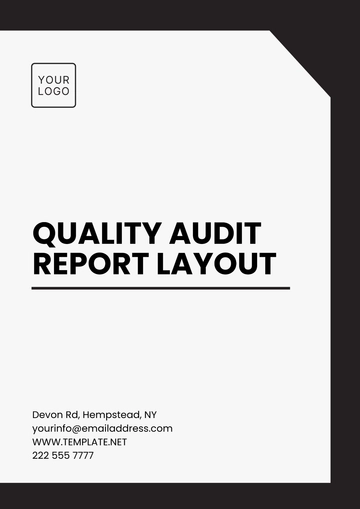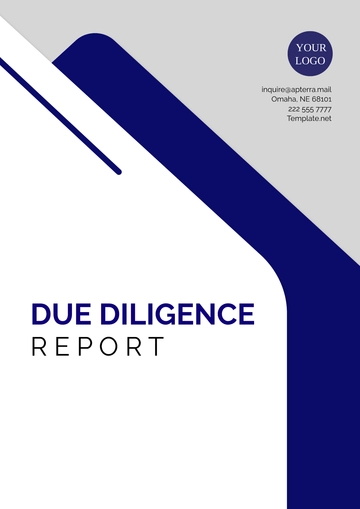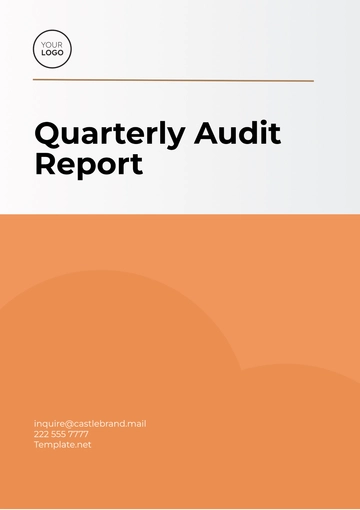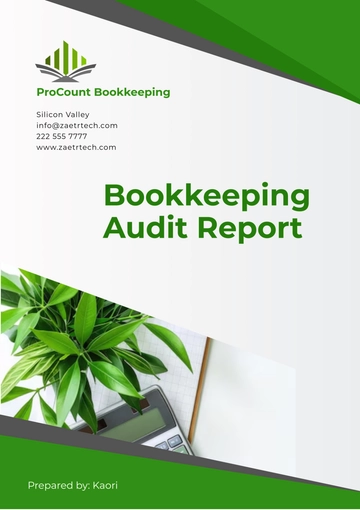Free Public Relations Audit Advertising Report
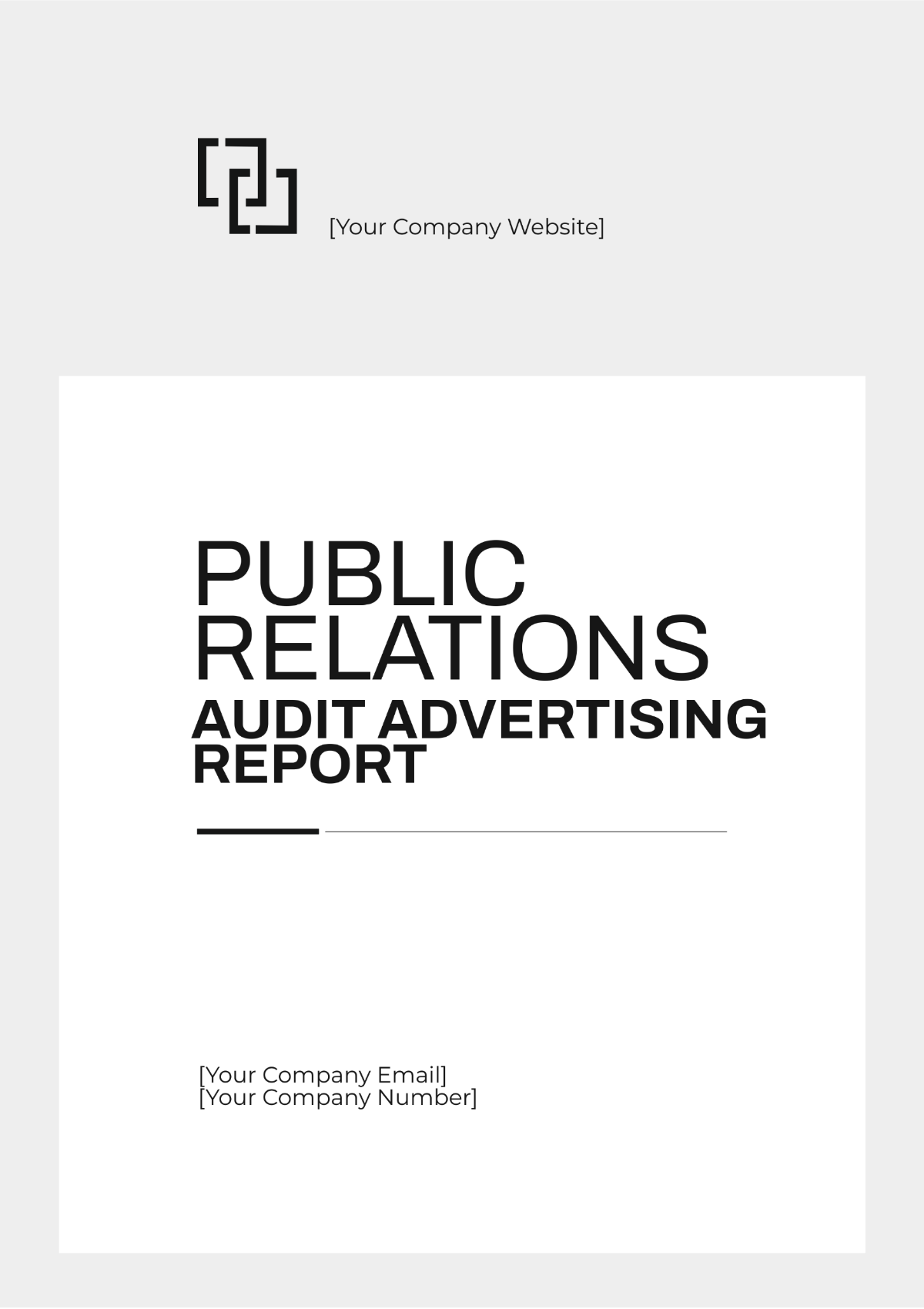
I. Introduction
[YOUR COMPANY NAME] conducted a comprehensive audit of the public relations and advertising activities for [CLIENT COMPANY NAME], aiming to assess the effectiveness and impact of current strategies. This report presents the findings and recommendations based on the analysis conducted between January 1, 2050, and December 31, 2050.
II. Executive Summary
In the year 2050, [CLIENT COMPANY NAME]'s public relations and advertising efforts have shown a commendable increase in visibility and engagement across various platforms, particularly in digital media channels. Key highlights include:
Successful implementation of targeted advertising campaigns resulting in a 20% increase in reach compared to the previous year.
Enhanced media relations leading to a 15% rise in positive media coverage and mentions.
Strengthened social media presence with a 30% growth in followers and engagement metrics.
III. Methodology
The audit utilized a combination of quantitative and qualitative methods:
Quantitative Analysis: Metrics such as reach, impressions, click-through rates (CTR), conversion rates, and media mentions were tracked and analyzed.
Qualitative Assessment: Surveys, interviews with stakeholders, and sentiment analysis of media coverage provided insights into public perception and brand sentiment.
IV. Findings
A. Advertising Effectiveness
Digital Advertising: The digital advertising campaigns conducted in 2050 effectively increased brand awareness, resulting in a 25% increase in CTR and a 10% increase in conversion rates.
Traditional Advertising: Print and broadcast advertising efforts yielded a significant reach of over 5 million impressions across key markets.
Table 1: Digital Advertising Metrics
Year | Impressions | Click-through Rate (%) | Conversion Rate (%) |
|---|---|---|---|
2050 | 10,000,000 | 2.5 | 10 |
2049 | 8,000,000 | 2.0 | 8 |
Table 2: Traditional Advertising Reach
Medium | Impressions |
|---|---|
5,000,000 | |
Broadcast (TV) | 3,000,000 |
Radio | 2,000,000 |
B. Public Relations Impact
Media Coverage: Analysis of media mentions indicated a 12% increase in positive coverage, driven by strategic media relations efforts and proactive media outreach.
Crisis Management: Response to potential crises was effective, with an average response time of less than 2 hours and maintaining a positive sentiment during critical incidents.
Table 3: Media Coverage Analysis
Year | Total Mentions | Positive Mentions (%) | Neutral Mentions (%) | Negative Mentions (%) |
|---|---|---|---|---|
2050 | 500 | 60 | 30 | 10 |
2049 | 450 | 55 | 35 | 10 |
C. Social Media Engagement
Platform Analysis: [CLIENT COMPANY NAME]’s social media presence on platforms such as Twitter and LinkedIn saw a 35% increase in followers and a 25% increase in engagement metrics through engaging content and interactive campaigns.
Content Effectiveness: Content strategy improvements led to higher engagement rates, particularly in campaigns related to new product launches and CSR initiatives.
Table 4: Social Media Metrics
Platform | Followers (End of Year) | Engagement Rate (%) |
|---|---|---|
100,000 | 5 | |
50,000 | 8 |
V. Recommendations
Based on the findings, the following recommendations are proposed to further enhance [CLIENT COMPANY NAME]’s public relations and advertising strategies:
Enhance Digital Advertising Targeting: Utilize advanced analytics for more precise audience targeting and personalized messaging based on user behavior and preferences.
Expand Influencer Partnerships: Collaborate with industry influencers to amplify brand messaging and reach niche audiences interested in technology innovation.
Strengthen Crisis Communication Protocols: Develop proactive strategies for managing potential crises, including scenario planning and regular training sessions for crisis response teams.
VI. Conclusion
In conclusion, the Public Relations Audit Advertising Report for [CLIENT COMPANY NAME] in 2050 highlights significant achievements in improving brand visibility and engagement across various channels. By implementing the recommended strategies, [CLIENT COMPANY NAME] can further solidify its position as a leader in technology innovation and strengthen its relationship with stakeholders.
- 100% Customizable, free editor
- Access 1 Million+ Templates, photo’s & graphics
- Download or share as a template
- Click and replace photos, graphics, text, backgrounds
- Resize, crop, AI write & more
- Access advanced editor
Unlock unparalleled insights with Template.net's Public Relations Audit Advertising Report Template. This meticulously crafted resource offers a comprehensive analysis framework, perfect for refining your PR strategies. Fully customizable and editable, it adapts effortlessly to your needs, ensuring seamless integration with our AI Editor Tool. Optimize your campaigns with detailed analytics and visual clarity.
You may also like
- Sales Report
- Daily Report
- Project Report
- Business Report
- Weekly Report
- Incident Report
- Annual Report
- Report Layout
- Report Design
- Progress Report
- Marketing Report
- Company Report
- Monthly Report
- Audit Report
- Status Report
- School Report
- Reports Hr
- Management Report
- Project Status Report
- Handover Report
- Health And Safety Report
- Restaurant Report
- Construction Report
- Research Report
- Evaluation Report
- Investigation Report
- Employee Report
- Advertising Report
- Weekly Status Report
- Project Management Report
- Finance Report
- Service Report
- Technical Report
- Meeting Report
- Quarterly Report
- Inspection Report
- Medical Report
- Test Report
- Summary Report
- Inventory Report
- Valuation Report
- Operations Report
- Payroll Report
- Training Report
- Job Report
- Case Report
- Performance Report
- Board Report
- Internal Audit Report
- Student Report
- Monthly Management Report
- Small Business Report
- Accident Report
- Call Center Report
- Activity Report
- IT and Software Report
- Internship Report
- Visit Report
- Product Report
- Book Report
- Property Report
- Recruitment Report
- University Report
- Event Report
- SEO Report
- Conference Report
- Narrative Report
- Nursing Home Report
- Preschool Report
- Call Report
- Customer Report
- Employee Incident Report
- Accomplishment Report
- Social Media Report
- Work From Home Report
- Security Report
- Damage Report
- Quality Report
- Internal Report
- Nurse Report
- Real Estate Report
- Hotel Report
- Equipment Report
- Credit Report
- Field Report
- Non Profit Report
- Maintenance Report
- News Report
- Survey Report
- Executive Report
- Law Firm Report
- Advertising Agency Report
- Interior Design Report
- Travel Agency Report
- Stock Report
- Salon Report
- Bug Report
- Workplace Report
- Action Report
- Investor Report
- Cleaning Services Report
- Consulting Report
- Freelancer Report
- Site Visit Report
- Trip Report
- Classroom Observation Report
- Vehicle Report
- Final Report
- Software Report

